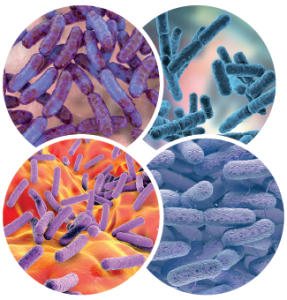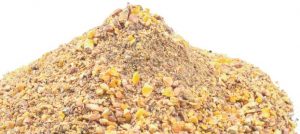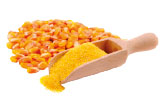 03 Mar 2023
03 Mar 2023
Functional pet foods have become a growing trend, with important benefits for companion animals.
Dogs and cats amongst other pets, present significant differences in processes related to digestion. While cats are considered strict carnivores, dogs appear to be omnivores like humans.
| Novel foods and feed components have been labeled as “functional foods” because they provide other health benefits besides the provision of essential nutrients, such as vitamins, minerals, water, protein, carbohydrates, and fats. |
Dogs share some carnivore traits with cats, as both lack salivary amylase, have a short gastrointestinal tract, and cannot synthesize vitamin D (National Research Council, 2006).

On the other hand, through their evolution and domestication process, dogs developed 3 specific genes which are involved in starch digestion and glucose uptake. These are: : AMY2B, MGAM and SGLT1.
Another characteristic of dogs’ digestive system is that they can synthesize several essential nutrients such as niacin, taurine and arginine (Bosch et al., 2015).
As far as cats are concerned, they can catabolize and use amino acids as an energy source for gluconeogenesis (Morris, 2002).
| Cat diets are composed by 52% protein, 36% fat, and 12% carbohydrates. |
Most functional foods can improve satiety and reduce postprandial glucose and insulin concentrations, thereby reducing diabetes-related comorbidities.
Inulin and oligofructose, two functional foods, can modify the intestinal microflora of dogs, cats and humans.
Ingredients found in pet foods

Dietary fibers, commonly found in pet foods, can modify gut microflora by promoting the growth of commensal bacteria.
[register]
The inclusion of dietary fibers can also associated have an impact on:

The main sources of whole grains are wheat, corn, oats, barley and rye. These are rich in dietary fibers, trace minerals, vitamin B and E. As well as bioactive compounds like tocotrienols, lignans and polyphenols, lipotropes and methyl donors, such as choline, methionine, betaine, inositol and folate. However, they also contain antinutritional factors which are defined as compounds that interfere with nutrient absorption such as: phytic acid, tannins and saponins. These compounds also possess antioxidant and anticancer properties.
Cereal grains are a large component of animal feed(~90%). With nutritional compositions that ranges from 21% to 27% total dietary fiber, 12% to 16% crude protein and 18% to 22% crude fat (Kahlon, 2009).
Corn is another valuable source of fiber as it possesses no detrimental effects on the palatability and digestibility of nutrients. It also reduces glycemic responses in adult dogs (de Godoy et al., 2009).

Although corn fiber contains phenolic compounds with known antioxidant, antimutagenic, and cholesterol-lowering effects that may reduce the incidence of colon cancer in humans, these effects have not been investigated in dogs and cats. Therefore, further studies are warranted.
Rice bran is an excellent source of essential amino acids as it is particularly rich in sulfur-containing amino acids, micronutrients such as magnesium, manganese and B vitamins. As well as bioactive molecules such as:
All of which have strong antioxidant, anti-inflammatory and chemopreventive properties. Contributing to the prevention and control of chronic diseases such as cardiovascular disease, type 2 diabetes and obesity.
The adequacy and safety of the food being supplied are of great interest for consumers.
Generally, pet owners do not refuse using foods that can support the health and welfare of their animals. However, they tend to be somewhat hesitant regarding their safety.

For example, the incorporation of corn and wheat with documented antioxidant and anticancer properties has been negatively perceived by a subgroup of pet owners who believe they contain lower quality or lower nutritional value for their dogs and cats. Despite the fact that such pet foods meet all the standards set by the American Association of Food Control Officials (AAFCO).
Pet owners have shown increased interest in holistic, natural diets that contain healthy ingredients, such as oats (Avena sativa) and barley (Hordeum vulgare). These ingredients have the potential to reduce the risk of obesity and prevent diabetes mellitus (higher intake levels of whole grains, result in lower fasting insulin levels).
In addition to focusing on nutrition-related benefits in pet foods, safety issues must also be considered and addressed.
You may also want to read: “Nutraceuticals in small animal diets”
Source:
[/register]
Subscribe now to the technical magazine of animal nutrition
AUTHORS

Nutritional Interventions to Improve Fertility in Male Broiler Breeders
Edgar Oviedo
The Use of Organic Acids in Poultry: A Natural Path to Health and Productivity
M. Naeem
Synergistic Benefits of Prebiotics and Probiotics in Poultry, Swine, and Cattle
Gustavo Adolfo Quintana-Ospina
Hybrid Rye Potential in Laying Hen Feed Rations
Gwendolyn Jones
A day in the life of phosphorus in pigs: Part I
Rafael Duran Giménez-Rico
Use of enzymes in diets for ruminants
Braulio de la Calle Campos
Minerals and Hoof Health in the Pregnant Sow
Juan Gabriel Espino
Impact of Oxidized Fats on Swine Reproduction and Offspring
Maria Alejandra Perez Alvarado